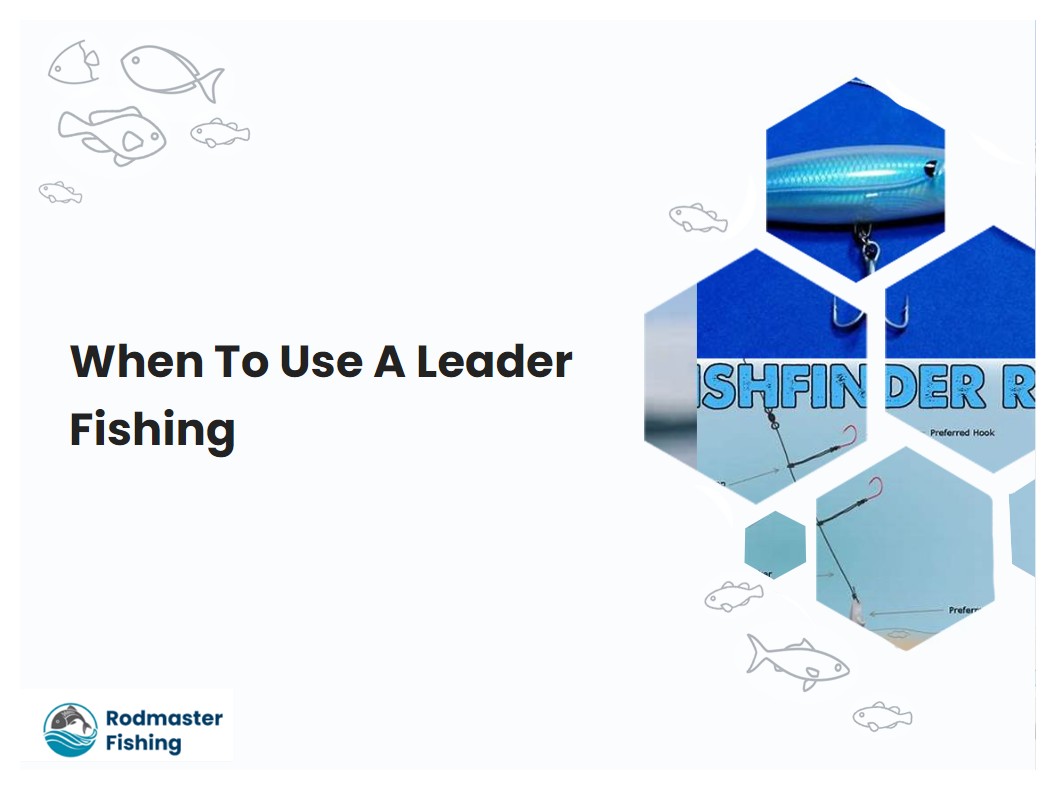When To Use A Leader Fishing
The best leader line to use depends on the type of fishing you are doing, as different types require different materials and strengths. Generally, standard monofilament leader is best for bait fishing, deep water jigging, and trolling. According to Seabreeze, fluorocarbon leader is best for casting lures, while braided lines are best for jigging. Finally, when targeting toothy fish, a wire trace is recommended.

The best leader line to use depends on the type of fishing you are doing, as different types require different materials and strengths. Generally, standard monofilament leader is best for bait fishing, deep water jigging, and trolling. According to Seabreeze, fluorocarbon leader is best for casting lures, while braided lines are best for jigging. Finally, when targeting toothy fish, a wire trace is recommended.
How to use a leader line for fly fishing?
When fishing, sometimes it is necessary to use a leader line in order to effectively utilize lightweight flies with a heavy colored fly line. This is done by tying the two pieces together with a knot or tying each line to the separate ends of a swivel. According to Shop Karls, using a leader line for fly fishing is essential as it is not easily detectable by fish and allows for more successful casting and presentation of lightweight flies.
Should you use a wire leader for bass fishing?
Using a wire leader is unnecessary for bass fishing, but it can be beneficial when fishing for pike or musky. According to upicefishing.com, a fishing leader is a length of leader line that is tied to the end of the main fishing line, providing protection against a fish's sharp teeth and abrasive structures in the water. It is important to choose the right leader material and strength based on the type of fish being targeted.
What is an example of a fishing leader configuration?
The purpose of a fishing leader is to keep the hook away from snags, as demonstrated by the drop shot configuration. According to Begin to Fish, a fishing leader can help to ensure that the hook does not become snagged on the bottom of the waterway and that the fish are able to take the bait without becoming tangled in the line. Using a leader allows for more control over the bait, allowing for more subtle and precise presentations.
Using a leader for fishing lines is recommended in many cases. This is because the leader can provide protection from fish biting through the main line, as well as improved casting and presentation of the bait or lure. It can help to reduce the visibility of the line in the water, making it less likely for fish to detect it.
Using a leader when fishing helps protect the main fishing line from damage and sharp fish teeth, making it a must for anglers. According to FishTackly Web, this can be achieved by attaching the leader to the main line and the hook, with the leader being made of a much thicker and tougher material than the main line. Research has shown that leaders can increase the number of bites an angler gets by up to 25%.
Leader lines are sometimes necessary when fishing, as they can provide more control and accuracy when tying a bait to the main line. This was concluded in the blog post "Why You *Sometimes* Need To Use Leader Line When Fishing" published on WebJan 12, 2021 by Shop Karls. Leader lines offer increased control and accuracy when tying the bait to the main line, allowing for more effective fishing.
A fishing leader is an extra line that is attached to the main fishing line for the purpose of improving the success rate of catching fish. The leader can be made from different types of line, such as mono, braided, or fluoro, and its purpose is to reduce the possibility of failure in the line and increase the chances of a successful catch.
A fishing leader is a line used to connect the main line to the lure or bait, and it can help to reduce tangles and increase the chances of a successful catch. According to What Is a Fishing Leader? When to Use & Why Do You Need One! on upicefishing.com, leaders also provide added protection from abrasive structures such as rocks and reefs, allowing anglers to fish in more challenging conditions. Fishing leaders can add strength to a line while still allowing it to be flexible.
A fishing leader is used to protect your line and to trick the fish into taking the bait, according to Catch and Fillet's "Fishing Leaders: What They Are and How to Rig Them" article on catchandfillet.com. It is important to know the type of leader that is needed for certain types of fish, as some leaders are more suitable for certain species. It is important to know how to rig a leader correctly in order to ensure the line will stay secure and that the fish will be able to see the bait.
Using a fishing leader is essential for successful fishing for bass, trout or other fish in open water, according to Express Fishings Web in 2021. A fishing leader is a line attached to your lure or bait that helps to keep the line from breaking, while also making it easier to catch bigger fish that may be wary of seeing a hook. Using a leader can help protect your line from abrasion and wear and tear due to its increased strength.
Wire leaders are necessary when fishing for predatory freshwater or saltwater fish with sharp teeth. According to FishKillFlea Web, "A wire leader is needed when targeting predatory freshwater or saltwater fish with sharp teeth". This is also true of predatory fish in shallow water, as they may be more aggressive and have sharper teeth than those found in deeper waters.
The purpose of a fishing leader line is to provide additional strength and flexibility to the main fishing line, allowing for a higher chance of successful catch. WebMar states that the length of the leader line should be determined based on the type of fish being targeted, and can vary greatly. Knowing the proper leader length for different types of fish can significantly increase the chances of a successful catch.
Fishing leaders are important components of fishing tackle, as they are used to help protect the line from abrasion and to provide a smoother transition from the line to the lure or bait. They are typically made from monofilament, fluorocarbon, or wire materials, depending on the type of fishing being done.
Do wire leaders protect lures?
Wire leaders are essential for catching toothy predators in both fresh and saltwater, as they protect lures, dead, and live bait from being bitten off. According to Strike and Catch, a wire leader should always be used when fishing for toothy predators to prevent bite-offs. Using wire leaders can help reduce line twist, noise, and visibility in the water.
How do I tie a leader?
Fishing leaders are essential for proper angling and the best way to cut it is to leave some inches for knots and tie the leader with a line-to-line knot, according to Fishing Leaders 101 from LureMeFish.com. 2020. Fishing leaders are also used to control the depth of the line in the water.
Can leaders be attached to rigs?
Leaders are an important part of saltwater fishing and can be attached to the end of a fishing rig using a knot or swivel. They are made from different fishing line materials and help to make the line nearly invisible, thereby boosting the appearance of the hook and lure setup.
What is the ideal leader length?
The ideal leader length for fishing is at least 7-9 feet, according to Tilt Fishing Web. This length allows for the optimal balance between flexibility, strength and invisibility to your target species. A longer leader can provide more abrasion resistance when fishing near cover or structure.
Where should monofilament leaders be stored?
Monofilament leaders should be stored in a container that blocks out light and in temperatures ranging from 65°F to 77°F in order to ensure optimal performance. Storing them in temperatures outside of this range can cause the material to degrade over time.





